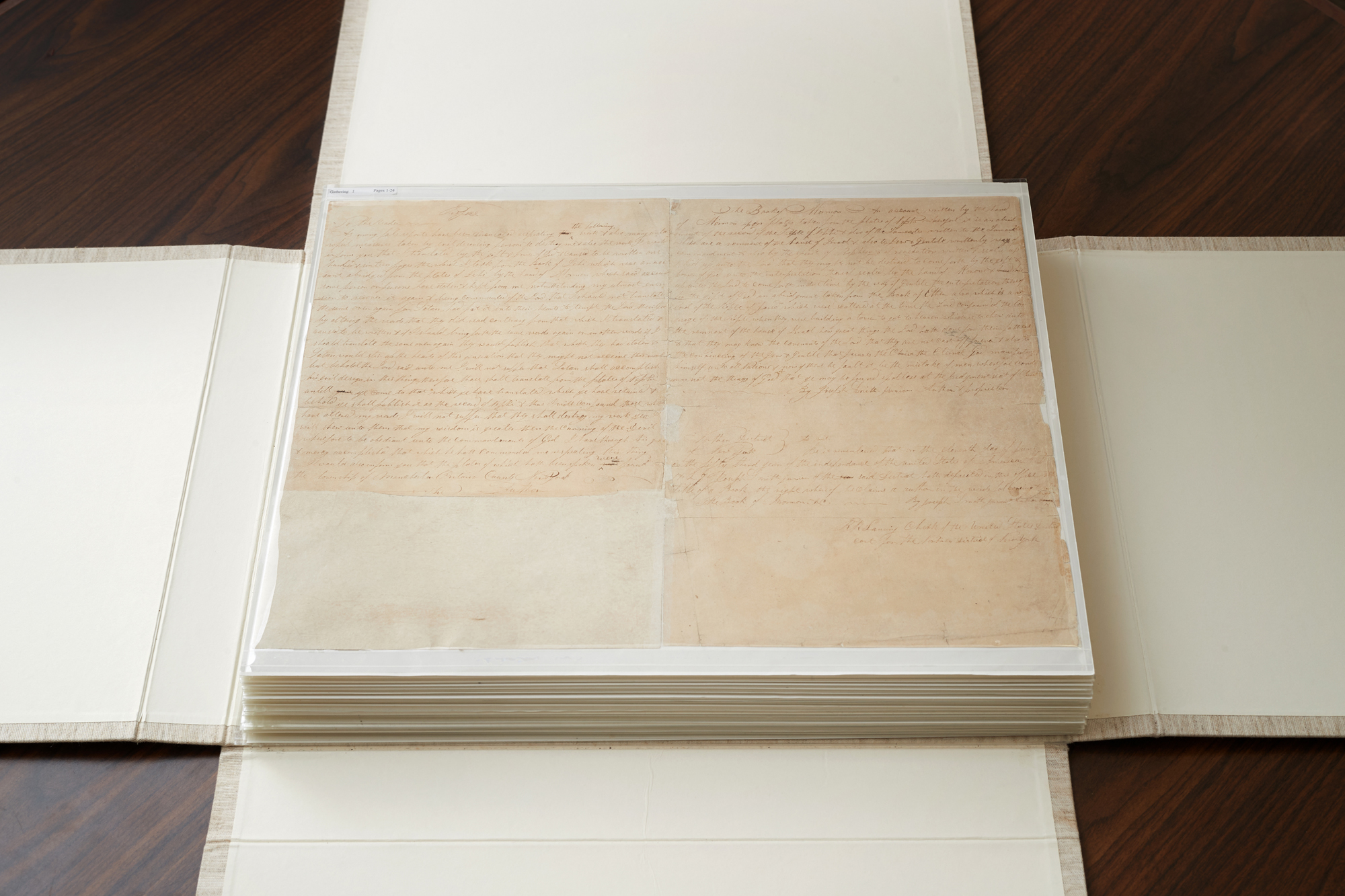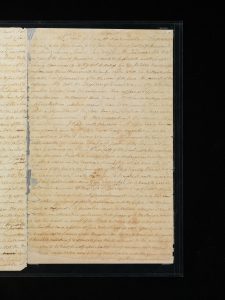
One hundred eighty-seven.
That’s how many changes BYU linguistics professor Royal Skousen said he made to the Book of Mormon while transcribing its printer’s manuscript. Skousen made those changes back when the manuscript was owned by the Community of Christ, an LDS splinter group established in 1860 that also holds the Book of Mormon as sacred.
But Skousen and other scholars will no longer go to the Community of Christ should they desire to study the printer’s manuscript.
On Sept. 20, The Church of Jesus Christ of Latter-day Saints announced that, thanks to donors, they bought the Book of Mormon printer’s manuscript from the Community of Christ for $35 million, possibly the most ever paid for a historical document.
“Not all sales are made public, so it is difficult to say if another manuscript has sold for more,” said Greg Seppi, curator of 19th and 20th Century Mormon and Western American books in the Special Collections library at BYU. “As far as I know, it is the most paid for a single historical document.”
Skousen published the Critical Text Project in 2001, which aimed to recover, as much as possible, the original Book of Mormon text. For example, according to the Critical Text Project website, “A stray drop of ink and a quirk of nineteenth-century penmanship make the difference between ‘retain that wrong’ and ‘repair that wrong.'”
“The (LDS) Church still needs to make changes in the text based on readings,” Skousen said. “I’ve made them in the Yale edition of the Book of Mormon, so I’ve published them (there). … Some (changes) aren’t important, but others are sort of important.”
Though Skousen had made a transcript from black and white photos of the printer’s manuscript — the handwritten Book of Mormon copied from the original manuscript to help printers set type — Skousen said he felt he needed to transcribe the actual pages, then owned by the Community of Christ.
Skousen, along with his wife and brother, obtained permission from the Community of Christ to spend two weeks working with the printer’s manuscript. The Critical Text Project was later instrumental in compiling portions of the Joseph Smith Papers.
Seppi said Oliver Cowdery, Hyrum Smith and a third, unknown individual helped copy the printer’s manuscript from the original manuscript. The LDS Church owns the majority of the original manuscript, but only about 28 percent has survived as humidity and mildew destroyed most of it in the cornerstone of the Nauvoo House where it was kept for years.
Missing only three lines of text and in stable condition, Seppi said the printer’s manuscript is the earliest, nearly complete historical Book of Mormon document.

“There is only one Mormon-related manuscript that might surpass ($35 million) if it is ever located — the 116 pages of the Book of Lehi that Martin Harris lost in 1828,” Seppi said.
He also said the Community of Christ and the LDS Church could have struck a deal in a few ways. Generally, an experienced rare document seller determines a quote, taking in factors such as condition, historical significance and the buyer’s appreciation for the artifact.
However, Seppi said, it’s just as likely that the Community of Christ asked the Church to make an offer based on the same factors and both parties negotiated until everyone was comfortable.
“The printer’s manuscript is a uniquely significant object in Mormon history, so (the) Community of Christ could’ve come up with the number in some other way and I have no direct or indirect knowledge of how the decision was made,” Seppi said.
Regardless of the money, Skousen said the printer’s manuscript is the most valuable historical document after founding documents like the Constitution and the Declaration of Independence.
“(The founding documents) are probably more valuable in money, but otherwise, this is the most valuable American document,” he said.
Skousen said Oliver Cowdery had the printer’s manuscript until his death in 1850. From there, he said, it passed to David Whitmer and then onto his grandson George Schweich, who sold it to the Community of Christ when the Church didn’t have money for it. According to the Community of Christ press release, they bought the printer’s manuscript as part of a collection in 1903 for $2,500.
“They kept it in a bank vault in a safe deposit box in one of Kansas City’s banks and every 10 years or so they’d take it out for a General Conference … and no one did any work on it,” Skousen said.
That changed, of course, when Skousen came along — and it’s changing again, now that the LDS Church owns the manuscript.
“(The LDS Church) says they’re going to re-photograph,” Skousen said. “They’re going to do multi-spectral, which means that you go into the ultraviolet area to try and get everything right.”
Two pages of the manuscript are currently on display at the Church History Library in Salt Lake City. When the rest of the manuscript goes on display in coming months, Skousen said to look for Joseph Smith’s grammatical corrections in heavier ink, the typesetter marks correcting Hyrum Smith’s bad spelling and other page quirks that show what went into producing the Book of Mormon.
Though Skousen said he doesn’t believe scholars will discover anything new from the text, he said “we see that what (the scribes) went through to produce (the Book of Mormon) was a lot of work and copying and so forth.”




